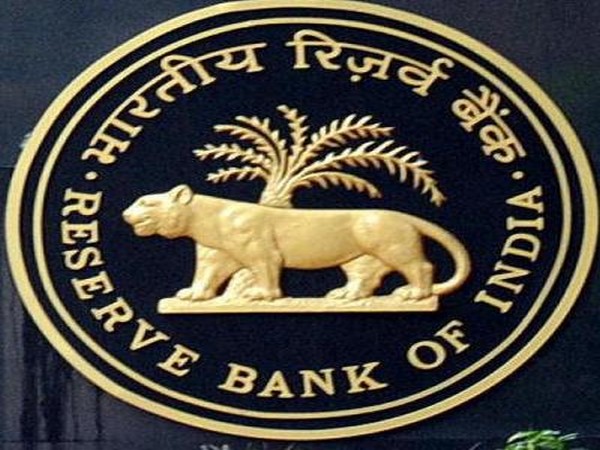RBI hits pause button on interest rate cut; allows loan restructuring
It also raised the limit of loans that can be availed against gold ornaments and jewellery and announced additional liquidity measures over and above those that have already been taken to reduce the asset-liability challenges in the NBFC sector over the last 3-4 months. After reducing the interest rate by a total of 115 basis points since February, the six-member Monetary Policy Committee (MPC) voted unanimously in favour of the status quo, leaving repo rate at 4 per cent, RBI Governor Shaktikanta Das said on the three-day deliberations of the panel.

- Country:
- India
The Reserve Bank on Thursday kept interest rates on hold to contain elevated inflation, even as it allowed banks to restructure some corporate and individual loans as part of efforts to revive the economy that faces its first contraction in more than four decades. It also raised the limit of loans that can be availed against gold ornaments and jewellery and announced additional liquidity measures over and above those that have already been taken to reduce the asset-liability challenges in the NBFC sector over the last 3-4 months.
After reducing the interest rate by a total of 115 basis points since February, the six-member Monetary Policy Committee (MPC) voted unanimously in favour of the status quo, leaving repo rate at 4 per cent, RBI Governor Shaktikanta Das said on the three-day deliberations of the panel. The committee expects inflation to remain elevated in Q2 (July-September), ease only in the second half of 2020-21 fiscal.
The 115 basis point rate cut this year was on top of the 135 basis points reduction in an easing cycle last year. "Given the uncertainty surrounding the inflation outlook and extremely weak state of the economy in the midst of an unprecedented shock from the ongoing pandemic, the MPC decided to keep the policy rate on hold," he said.
Das said the central bank would remain "watchful for a durable reduction in inflation to use the available space to support the revival of the economy." The committee, however, unanimously decided to continue to keep its accommodative policy stance "as long as necessary to revive growth". The RBI allowed banks to restructure loans of companies that were not in default for more than 30 days as on March 1, 2020. Lenders can grant loan extensions of as long as two years with or without a freeze on repayments.
Banks will however need to set aside higher provisioning for such a recast. There will be separate windows available for a restructuring of loans of Small and mid-size enterprises (SMEs) and individual borrowers who have been impacted by the pandemic.
Stating that the move will help companies that have been struggling with the economic fallout of the coronavirus, Das said the resolution plan may be invoked any time within 2020 and will have to be implemented within 180 days from the date of invocation. "The underlying theme of this resolution window is the preservation of the soundness of the Indian banking sector," he said.
The central bank also announced setting up an expert committee headed by KV Kamath -- the former chairman of BRICS Bank and ICICI Bank — for corporate and personal loan resolution plans, which will look into sector-specific financial parameters for restructurings. The RBI also decided to broaden the scope of Priority Sector Lending (PSL) by including start-ups and enhancing borrowing limits for renewable energy sectors. The central bank would also increase the targets for lending to 'small and marginal farmers' and 'weaker sections' under the PSL.
Das said the limit to which individuals can borrow against gold ornaments and jewellery until March 31, is being increased to 90 per cent of the value from the current cap of 75 per cent. He also announced additional liquidity of Rs 5,000 crore each at repo rate to National Bank for Agriculture and Rural Development (NABARD) and National Housing Bank (NHB) respectively to protect the primary and the housing sectors from liquidity challenges.
RBI ending its rate cut spree is being seen as striking a balance between inflation and growth. Moreover, as inflationary pressures mount and reached as high as 6.09 per cent in June 2020, RBI adopted a wait and watch stance to assess the impact of previous measures on various sectors. The pause on rate cuts was also on the back of the previous transmission of rate cuts to consumers through mortgage loans.
In response to the cumulative rate cut of 115 bps announced since February 2020, banks have already transmitted 70-90 bps in their home loan portfolio, being the fastest transmission. While, economic activity had started to recover from the lows of April-May, a surge in fresh infections have forced re-clamping of lockdowns in several cities and states to "level-off" various high-frequency indicators, Das said.
The MPC saw upside risks to food prices and elevated headline inflation during July-September, which would ease in the second half of 2020-21 fiscal. It forecast a contraction in real GDP growth for April 2020 to March 2021 fiscal.
"Real GDP growth in the first half of the year is estimated to remain in the contraction zone. For the year 2020-21 as a whole, real GDP growth is also estimated to be negative," Das said. Keeping interest rates unchanged will help achieve the medium-term target of consumer price index (CPI) inflation of 4 per cent with a band of +/-2 per cent while supporting growth, RBI said.
On raising the limit of advance against gold ornaments and jewellery, he said, "with a view to mitigating the impact of COVID-19 on households, it has been decided to increase the permissible loan-to-value ratio (LTV) for such loans to 90 per cent. This relaxation shall be available till March 31, 2021." PTI DP ANZ ANZ DRR DRR.
(This story has not been edited by Devdiscourse staff and is auto-generated from a syndicated feed.)










